It looks like you're using an Ad Blocker.
Please white-list or disable AboveTopSecret.com in your ad-blocking tool.
Thank you.
Some features of ATS will be disabled while you continue to use an ad-blocker.
share:
So, somehow I found myself convinced to do a thread that is probably going to turn into a book instead of a thread, but here goes.
This is going to be a thread (book), about the history of UAVs (only airborne, not RPVs, not RSVs, only aircraft). It is far more extensive than most people realize. We're going to start from the top and work our way up to the modern era, and possibly a few concepts for the future as well (I don't know where this thread is going to go once I get going). Some of these may appear to be in the wrong order, but I'm trying to go by operational dates, not just testing dates. This is by no means a definitive list of every UAV ever built, designed, or tested as I'm sure I'll miss a few. With that in mind, let's get started.
The first use of a UAV:
While not technically a UAV, the first unmanned weapon used was on 15 July 1849, when at least two unmanned balloons were released from the Austrian warship Vulcan, and floated over Venice, where they released several shrapnel bombs, when their timer activated. There was almost no notice by anyone in the world, but this day would eventually change the world of warfare.
There are conflicting reports as to how many balloons were actually used during the siege, with some reports saying as many as 200, while others say only 2. Several balloons were reported to drift out to sea when the winds shifted, while the rest were able to drift over the city. Some reports, such as the Captain of the English Brig Frolic say that the terror of the new weapons damaged morale in the city, but the reality is that they didn't make any difference in the siege of Venice, which went on for another month after the use of the balloons. The technical ingenuity of this system however, especially for the time was incredible.
The Aerial Torpedo and Aerial Target:
Sopwith, maker of the famous Sopwith Camel, also came up with the idea of making an unmanned aircraft, filled with explosives. They named it the "Aerial Torpedo". At the begining of WWI, a small aircraft, with a 50hp Gnome engine was developed by the RFC. The aircraft, and explosives were fairly simple, the problem came with the remote control radio gear. It was discovered that the uncowled engine created so much radio noise that the remote control gear was unreliable. The radio gear worked perfectly with the engine switched off, but it was too unreliable to fly the aircraft with the engine on, so it was never flown.
The idea for the system caught the eye of the Sopwith Coporation, and Ruston Proctor & Co LTD, who both began to develop their own systems. Meanwhile, A.B.C. Motors developed a 35hp throwaway motor for the aircraft. Shortly after, Sopwith came out with the Sopwith AT (Aerial Target).
The Aerial Target was a 14 foot wingspan aircraft, with the remote control box placed near the tail, behind the fuel, batteries, and explosives. The control box was a full servo control system, however, the aircraft was damaged in the hangar and abandonded before it ever flew. This was 1916.
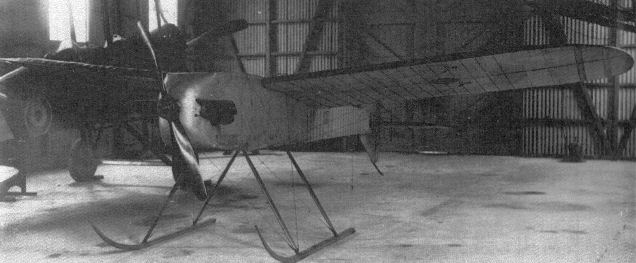
Shortly after, the US Army contracted for aerial torpedoes, which led to the Kettering Bug (more properly the Kettering Aerial Torpedo). The Kettering Bug was developed in 1917, by Charles Kettering. The launch mechanism was a track similar to a catapult system. The control mechanism consisted of pneumatic and electrical controls to stabilize the aircraft. A timer was included, and when activated the wings were jettisoned, plunging the aircraft to the ground, where the 180 pounds of explosives detonated.
The Army had plans to use the Bug during the war, but fewer than 50 were built before the Armistice was signed in 1918. Plans to develop the Bug after the war were shelved due to lack of funding.
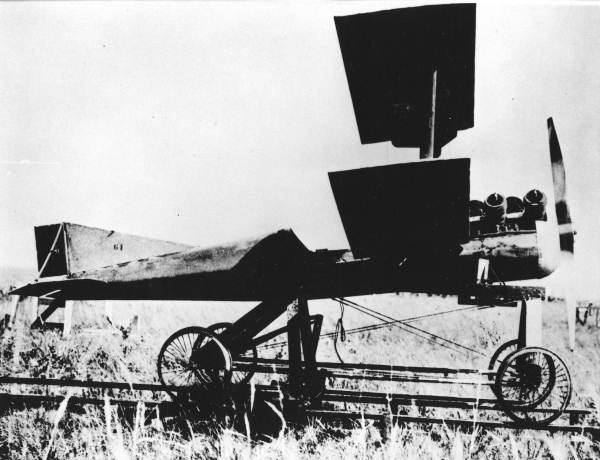
The Larynx
After WWI, the RAF began development of the Larynx unmanned aerial vehicle system. The Larynx consisted of a radial engine, and a gyroscope control engine. The top speed was faster than any other fighter of the time.
The first test occured in 1927, from the deck of the destroyer HMS Stronghold. Six more tests occured over the next two years, most unsuccessful. A test from land occured in 1929, and was successful, and it's rumored that tests using a 250 pound warhead occured in Iraq, but were inconclusive.

The Fairey Queen and Queen Bee
In 1931 the British developed the Fairey Queen aerial target, based on the Fairey IIIF floatplane. Only three were produced.
In 1935, a larger version was developed known as the Queen Bee, based on the Tiger Moth, and was the first returnable/reusable unmanned aircraft developed. It was capable of flying up to 300 miles, up to 17,000 feet. It would be fitted with either floats or wheels, depending on if it was launched from land, or water. A total of 380 Queen Bee aircraft were built, and they were used until 1947.
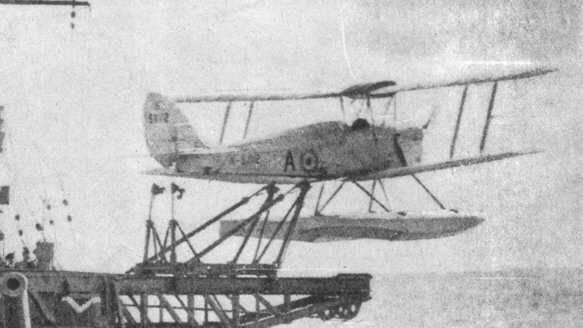
RP-1/2/3/4/5
In 1935 the Radioplane company demonstrated the RP-1, to the US Army. The RP-1 was powered by a 6 hp 2 cylinder 2 cycle motor. The Army designated them the OQ-1. In 1938, the RP-2 was tested, and in 1939 the RP-3 and RP-4 were demonstrated. When the RP-5 debuted the Army redesignated it the OQ-2, and the Navy then became interested, calling them the TDD-1. Several thousand of these aircraft were made, eventually leading to the OQ-3 and OQ-14, known as the TDD-2 and TDD-3 in the Navy.
The RP series of aircraft used a slingshot type launch system, with either a parachute or runway recovery. They had a 70 minute endurance, using a remote control system.
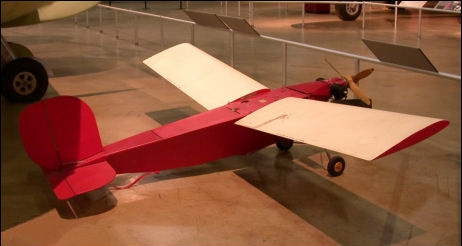
Curtiss N2C-2
In 1937, the US Navy converted several Curtiss N2C-2 Fledgling biplanes into unmanned target aircraft. They were fitted with a tricycle landing gear, and could be controlled by either the ground, or another aircraft. The Navy designated them the A-3 Target. They were capable of flying 366 miles, at just over 100 miles an hour, with a 15,000 foot ceiling.

Culver PQ-8/PQ-14
In 1940, the US Army Air Corps selected the Culver Cadet for a full size target drone. Initially designated the A-8, it was later designated the XPQ-8 or PQ-8. The design was originally designed as a civilian sport plane. It was a two seat, monoplane, with a fixed tricycle landing gear.
After tests were complete the Air Corps ordered 200 of the PQ-8s, with an additional 200 PQ-8As, which featured a more powerful engine. In 1941, after testing, the US Navy ordered 200, designated TDC-2. Eventually a larger version was built, with a retractable landing gear, known as the PQ-14. The PQ-14 was controlled by a "mother ship", usually a C-45, and flown for anti-aircraft crews to train on. Almost 600 were built.

This is going to be a thread (book), about the history of UAVs (only airborne, not RPVs, not RSVs, only aircraft). It is far more extensive than most people realize. We're going to start from the top and work our way up to the modern era, and possibly a few concepts for the future as well (I don't know where this thread is going to go once I get going). Some of these may appear to be in the wrong order, but I'm trying to go by operational dates, not just testing dates. This is by no means a definitive list of every UAV ever built, designed, or tested as I'm sure I'll miss a few. With that in mind, let's get started.
The first use of a UAV:
While not technically a UAV, the first unmanned weapon used was on 15 July 1849, when at least two unmanned balloons were released from the Austrian warship Vulcan, and floated over Venice, where they released several shrapnel bombs, when their timer activated. There was almost no notice by anyone in the world, but this day would eventually change the world of warfare.
There are conflicting reports as to how many balloons were actually used during the siege, with some reports saying as many as 200, while others say only 2. Several balloons were reported to drift out to sea when the winds shifted, while the rest were able to drift over the city. Some reports, such as the Captain of the English Brig Frolic say that the terror of the new weapons damaged morale in the city, but the reality is that they didn't make any difference in the siege of Venice, which went on for another month after the use of the balloons. The technical ingenuity of this system however, especially for the time was incredible.
The Aerial Torpedo and Aerial Target:
Sopwith, maker of the famous Sopwith Camel, also came up with the idea of making an unmanned aircraft, filled with explosives. They named it the "Aerial Torpedo". At the begining of WWI, a small aircraft, with a 50hp Gnome engine was developed by the RFC. The aircraft, and explosives were fairly simple, the problem came with the remote control radio gear. It was discovered that the uncowled engine created so much radio noise that the remote control gear was unreliable. The radio gear worked perfectly with the engine switched off, but it was too unreliable to fly the aircraft with the engine on, so it was never flown.
The idea for the system caught the eye of the Sopwith Coporation, and Ruston Proctor & Co LTD, who both began to develop their own systems. Meanwhile, A.B.C. Motors developed a 35hp throwaway motor for the aircraft. Shortly after, Sopwith came out with the Sopwith AT (Aerial Target).
The Aerial Target was a 14 foot wingspan aircraft, with the remote control box placed near the tail, behind the fuel, batteries, and explosives. The control box was a full servo control system, however, the aircraft was damaged in the hangar and abandonded before it ever flew. This was 1916.

Shortly after, the US Army contracted for aerial torpedoes, which led to the Kettering Bug (more properly the Kettering Aerial Torpedo). The Kettering Bug was developed in 1917, by Charles Kettering. The launch mechanism was a track similar to a catapult system. The control mechanism consisted of pneumatic and electrical controls to stabilize the aircraft. A timer was included, and when activated the wings were jettisoned, plunging the aircraft to the ground, where the 180 pounds of explosives detonated.
The Army had plans to use the Bug during the war, but fewer than 50 were built before the Armistice was signed in 1918. Plans to develop the Bug after the war were shelved due to lack of funding.

The Larynx
After WWI, the RAF began development of the Larynx unmanned aerial vehicle system. The Larynx consisted of a radial engine, and a gyroscope control engine. The top speed was faster than any other fighter of the time.
The first test occured in 1927, from the deck of the destroyer HMS Stronghold. Six more tests occured over the next two years, most unsuccessful. A test from land occured in 1929, and was successful, and it's rumored that tests using a 250 pound warhead occured in Iraq, but were inconclusive.

The Fairey Queen and Queen Bee
In 1931 the British developed the Fairey Queen aerial target, based on the Fairey IIIF floatplane. Only three were produced.
In 1935, a larger version was developed known as the Queen Bee, based on the Tiger Moth, and was the first returnable/reusable unmanned aircraft developed. It was capable of flying up to 300 miles, up to 17,000 feet. It would be fitted with either floats or wheels, depending on if it was launched from land, or water. A total of 380 Queen Bee aircraft were built, and they were used until 1947.

RP-1/2/3/4/5
In 1935 the Radioplane company demonstrated the RP-1, to the US Army. The RP-1 was powered by a 6 hp 2 cylinder 2 cycle motor. The Army designated them the OQ-1. In 1938, the RP-2 was tested, and in 1939 the RP-3 and RP-4 were demonstrated. When the RP-5 debuted the Army redesignated it the OQ-2, and the Navy then became interested, calling them the TDD-1. Several thousand of these aircraft were made, eventually leading to the OQ-3 and OQ-14, known as the TDD-2 and TDD-3 in the Navy.
The RP series of aircraft used a slingshot type launch system, with either a parachute or runway recovery. They had a 70 minute endurance, using a remote control system.

Curtiss N2C-2
In 1937, the US Navy converted several Curtiss N2C-2 Fledgling biplanes into unmanned target aircraft. They were fitted with a tricycle landing gear, and could be controlled by either the ground, or another aircraft. The Navy designated them the A-3 Target. They were capable of flying 366 miles, at just over 100 miles an hour, with a 15,000 foot ceiling.

Culver PQ-8/PQ-14
In 1940, the US Army Air Corps selected the Culver Cadet for a full size target drone. Initially designated the A-8, it was later designated the XPQ-8 or PQ-8. The design was originally designed as a civilian sport plane. It was a two seat, monoplane, with a fixed tricycle landing gear.
After tests were complete the Air Corps ordered 200 of the PQ-8s, with an additional 200 PQ-8As, which featured a more powerful engine. In 1941, after testing, the US Navy ordered 200, designated TDC-2. Eventually a larger version was built, with a retractable landing gear, known as the PQ-14. The PQ-14 was controlled by a "mother ship", usually a C-45, and flown for anti-aircraft crews to train on. Almost 600 were built.

edit on 11/6/2013 by Zaphod58 because: (no reason given)
edit on 11/6/2013 by tothetenthpower
because: (no reason given)
T2D2-1 Katydid
During WWII the T2D2-1 Katydid was developed (no one really seems sure of exactly when, just that it was during the war). It was what could be considered the first "real" UAV, as it was not based on a preexisting aircraft design.
The Katydid (later designated either the KDD-1 or KDH-1) was an air launched drone, wth a cylindrical fuselage, using a pulse jet engine, and a V-tail. A small number were used by the US Navy during the war, but they weren't produced in large numbers.
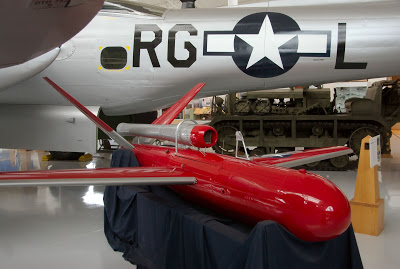
Hoop-La
In 1941, the Hoop-La was proposed by the Miles Aircraft Company of England. It would have been a high wing aircraft capable of carrying a bomb weighing almost 1000 pounds. While the accuracy of the control system was very poor, the aircraft would have been able to hit a city sized target. The aircraft was never produced however.
Program Option
Begun in 1937, after seeing the Queen Bee the Option program looked to develop armed attack drones for the US Navy. Primary of these were the TDN-1 and TDR-1. After the attack on Pearl Harbor in 1941, there was a lot more interest in Option, and a plan was developed for 18 squadrons of unmanned attack aircraft, numbering as many as 5,000 aircraft.
By 1942, the TDN-1 (Torpedo-Drone produced by the Naval Factory) had been born. It was a high wing, twin engine fixed landing gear aircraft, capable of carrying either a torpedo, or a bomb weighing 1900 pounds. A total of 114 were built

The TDR-1 was developed around the same time as the TDN-1. It was a similar design, but was an aluminum low wing monoplane, built by the Interstate Aircraft Company of Los Angeles. Control was from a modified Grumman Avenger torpedo bomber, using a joystick and a rotary dial system, similar to a telephone. Four aircraft could be controlled at any one time.
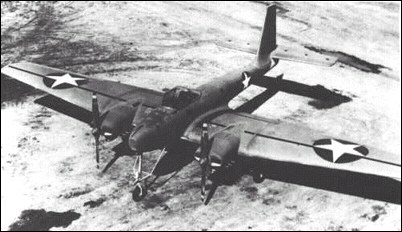
In April of 1942, a successful torpedo attack was completed on a destroyer while the UAV was 20 miles from the control aircrat. RCA had developed camera to mount in the UAV, to allow the operator to see what the UAV "saw". A second UAV was crashed into a target moving at 8 knots. By 1944, UAVs were used in attacks in the Pacific, with noticable success . In 1944, 4 UAVs attacked a beached Japanese merchant ship, with 2 impacting the ship. A total of 46 UAVs were used in the Soloman Islands during the war.
GM A-1
The GM A-1 was a joint development by Kettering and GM to develop a flying bomb. Like the Kettering Bug, it would be track launched, capable of carrying a 500 pound bomb, 400 miles, with a top speed of 200 miles an hour. The program was eventually cancelled due to poor organization and management, although several aircraft were built.
BQ series
In 1941, the US began development of the BQ series of aircraft. There were several aircraft used, including the TDR-1 (XBQ-4), the AT-21 jet developed by Fairchild, and the two most successful (using the term loosely), the unmanned B-17 and B-24 (BQ-7 and BQ-8 respectively).
Under the Aphrodite program, 25 B-17s were converted to BQ-7 aircraft. They were filled with 18,000 pounds of Torpex explosives, and were taken off under the command of a pilot and copilot, who would bail out when the aircraft was airborne, turning control over to the command aircraft. The aircraft were to attack hardened German targets, but yielded poor results, with one crashing on British soil, and one losing radio communications with the control aircraft.
The B-24, would also be taken off by two pilots, before being turned over to the control aircraft, but was filled with 25,000 pounds of Torpex. It was on one of these missions that Lieutenant Joseph P. Kennedy, brother to John F. Kennedy, and Lieutenant Willford J. Willey were killed, when their B-24 exploded in midair after arming the Torpex explosives. The Aphrodite program was cancelled shortly after, due to poor results.
Germany
At the same time, in 1941 Germany was working on their own UAV programs. They took a slightly different route however, than the Allies. Germany was working on "composite aircraft". With a composite aircraft, a smaller aircraft, such as the BF-109, or FW-190 would be mounted on top of a larger bomber aircraft. The smaller aircraft would steer the larger bomber towards the target area, eventually detaching, and allowing the larger aircraft to fly to the target on autopilot.
Thus, the Mistel was born, under the "Beethoven" program. The Mistel first flew in 1943, and consisted of a Ju-88A bomber, with a Messerschmitt BF-109E mounted on top of it. Later variants included the use of a Focke-Wulf Fw-190A on either a Ju-88A or Ju-88G bomber. The program remained operational until 1944.
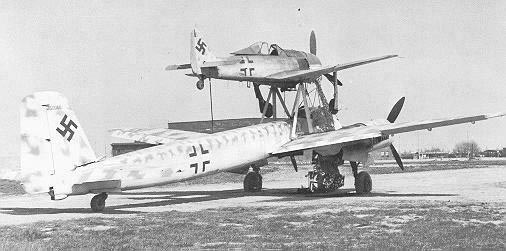
Post WWII
After WWII ended, the UAV idea began to blossom. Larger, faster UAVs were required as aircraft became faster, and better armed. It was during this period that we began to see more purpose built UAVs, and the end of converted aircraft. This is when the UAV began to evolve into the look that we see today.
MQM-33/36/57
In 1946, Radioplane developed what would later (in the 80s) be known as the Basic Training Target (BTT) family. The initial designations for them were the OQ-19A/D (Army) and KD2R-1 (Navy).
The KD2R-1 became the MQM-36 Shelduck. It consisted of a 4-stroke 95 HP engine with radar enhancements on the wingtips to make it appear to be a larger aircraft. Over 73,000 were made, and is reported to still be in service to this day.
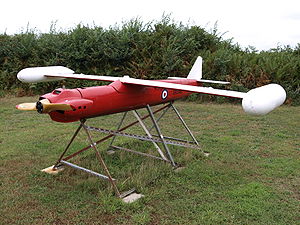
The MQM-57 Falconer flew in 1955. It was longer than the Shelduck, but was a similar shape. However the Falconer had a radio control backup to the autopilot system, as well as the ability to carry cameras, and illumination flares for night photography. All the MQM series were launched using a rocket assist and could be recovered by parachute. The Falconer remained operational until the 1970s, despite only have an endurance of around half an hour.
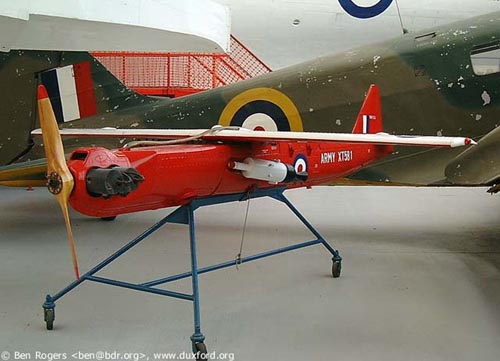
MQM-39A/61A
In 1959, Beechcraft developed and flew the "Model 1001", which was later designated the MQM-39A in the Navy, and the "Model 1025" which became the MQM-61A for the Army.
The US Navy issued a requirement for a recoverable low speed target, which led to the MQM-39A (initially designated the KDB-1). The MQM-39 was powered by a 6-cylinder piston, and was either catapult or RATO launched, with a parachute recovery. The aircraft could have a number of systems installed to show accuracy of the gunners, and could two targets or banners as well. It was built into the 1970s.
At the same time, the Army acquired the MQM-61A Cardinal, which was used from 1958. it was almost identical to the MQM-39 used by the Navy.

During WWII the T2D2-1 Katydid was developed (no one really seems sure of exactly when, just that it was during the war). It was what could be considered the first "real" UAV, as it was not based on a preexisting aircraft design.
The Katydid (later designated either the KDD-1 or KDH-1) was an air launched drone, wth a cylindrical fuselage, using a pulse jet engine, and a V-tail. A small number were used by the US Navy during the war, but they weren't produced in large numbers.

Hoop-La
In 1941, the Hoop-La was proposed by the Miles Aircraft Company of England. It would have been a high wing aircraft capable of carrying a bomb weighing almost 1000 pounds. While the accuracy of the control system was very poor, the aircraft would have been able to hit a city sized target. The aircraft was never produced however.
Program Option
Begun in 1937, after seeing the Queen Bee the Option program looked to develop armed attack drones for the US Navy. Primary of these were the TDN-1 and TDR-1. After the attack on Pearl Harbor in 1941, there was a lot more interest in Option, and a plan was developed for 18 squadrons of unmanned attack aircraft, numbering as many as 5,000 aircraft.
By 1942, the TDN-1 (Torpedo-Drone produced by the Naval Factory) had been born. It was a high wing, twin engine fixed landing gear aircraft, capable of carrying either a torpedo, or a bomb weighing 1900 pounds. A total of 114 were built

The TDR-1 was developed around the same time as the TDN-1. It was a similar design, but was an aluminum low wing monoplane, built by the Interstate Aircraft Company of Los Angeles. Control was from a modified Grumman Avenger torpedo bomber, using a joystick and a rotary dial system, similar to a telephone. Four aircraft could be controlled at any one time.

In April of 1942, a successful torpedo attack was completed on a destroyer while the UAV was 20 miles from the control aircrat. RCA had developed camera to mount in the UAV, to allow the operator to see what the UAV "saw". A second UAV was crashed into a target moving at 8 knots. By 1944, UAVs were used in attacks in the Pacific, with noticable success . In 1944, 4 UAVs attacked a beached Japanese merchant ship, with 2 impacting the ship. A total of 46 UAVs were used in the Soloman Islands during the war.
GM A-1
The GM A-1 was a joint development by Kettering and GM to develop a flying bomb. Like the Kettering Bug, it would be track launched, capable of carrying a 500 pound bomb, 400 miles, with a top speed of 200 miles an hour. The program was eventually cancelled due to poor organization and management, although several aircraft were built.
BQ series
In 1941, the US began development of the BQ series of aircraft. There were several aircraft used, including the TDR-1 (XBQ-4), the AT-21 jet developed by Fairchild, and the two most successful (using the term loosely), the unmanned B-17 and B-24 (BQ-7 and BQ-8 respectively).
Under the Aphrodite program, 25 B-17s were converted to BQ-7 aircraft. They were filled with 18,000 pounds of Torpex explosives, and were taken off under the command of a pilot and copilot, who would bail out when the aircraft was airborne, turning control over to the command aircraft. The aircraft were to attack hardened German targets, but yielded poor results, with one crashing on British soil, and one losing radio communications with the control aircraft.
The B-24, would also be taken off by two pilots, before being turned over to the control aircraft, but was filled with 25,000 pounds of Torpex. It was on one of these missions that Lieutenant Joseph P. Kennedy, brother to John F. Kennedy, and Lieutenant Willford J. Willey were killed, when their B-24 exploded in midair after arming the Torpex explosives. The Aphrodite program was cancelled shortly after, due to poor results.
Germany
At the same time, in 1941 Germany was working on their own UAV programs. They took a slightly different route however, than the Allies. Germany was working on "composite aircraft". With a composite aircraft, a smaller aircraft, such as the BF-109, or FW-190 would be mounted on top of a larger bomber aircraft. The smaller aircraft would steer the larger bomber towards the target area, eventually detaching, and allowing the larger aircraft to fly to the target on autopilot.
Thus, the Mistel was born, under the "Beethoven" program. The Mistel first flew in 1943, and consisted of a Ju-88A bomber, with a Messerschmitt BF-109E mounted on top of it. Later variants included the use of a Focke-Wulf Fw-190A on either a Ju-88A or Ju-88G bomber. The program remained operational until 1944.

Post WWII
After WWII ended, the UAV idea began to blossom. Larger, faster UAVs were required as aircraft became faster, and better armed. It was during this period that we began to see more purpose built UAVs, and the end of converted aircraft. This is when the UAV began to evolve into the look that we see today.
MQM-33/36/57
In 1946, Radioplane developed what would later (in the 80s) be known as the Basic Training Target (BTT) family. The initial designations for them were the OQ-19A/D (Army) and KD2R-1 (Navy).
The KD2R-1 became the MQM-36 Shelduck. It consisted of a 4-stroke 95 HP engine with radar enhancements on the wingtips to make it appear to be a larger aircraft. Over 73,000 were made, and is reported to still be in service to this day.

The MQM-57 Falconer flew in 1955. It was longer than the Shelduck, but was a similar shape. However the Falconer had a radio control backup to the autopilot system, as well as the ability to carry cameras, and illumination flares for night photography. All the MQM series were launched using a rocket assist and could be recovered by parachute. The Falconer remained operational until the 1970s, despite only have an endurance of around half an hour.

MQM-39A/61A
In 1959, Beechcraft developed and flew the "Model 1001", which was later designated the MQM-39A in the Navy, and the "Model 1025" which became the MQM-61A for the Army.
The US Navy issued a requirement for a recoverable low speed target, which led to the MQM-39A (initially designated the KDB-1). The MQM-39 was powered by a 6-cylinder piston, and was either catapult or RATO launched, with a parachute recovery. The aircraft could have a number of systems installed to show accuracy of the gunners, and could two targets or banners as well. It was built into the 1970s.
At the same time, the Army acquired the MQM-61A Cardinal, which was used from 1958. it was almost identical to the MQM-39 used by the Navy.

edit on 11/6/2013 by Zaphod58 because: (no reason given)
edit on 11/6/2013 by Zaphod58 because: (no reason
given)
edit on 11/7/2013 by Zaphod58 because: (no reason given)
AQM-38A/B
In 1959, the AQM-38 entered service. Initially known as the RP-76 for the Army, and the RP-70/XKD4R-1 for the Navy, the AQM-38 was a rocket powered target drone for training missile crews on. The AQM-38A, for the Army was subsonic, and powered by an Aerojet solid fuel motor. The AQM-38B, for the Navy, was powered by a larger solid fuel rocket and was capable of a top speed of Mach 1.25. Both were air launched, and parachute recovered, and featured radar enhancements to show larger targets.
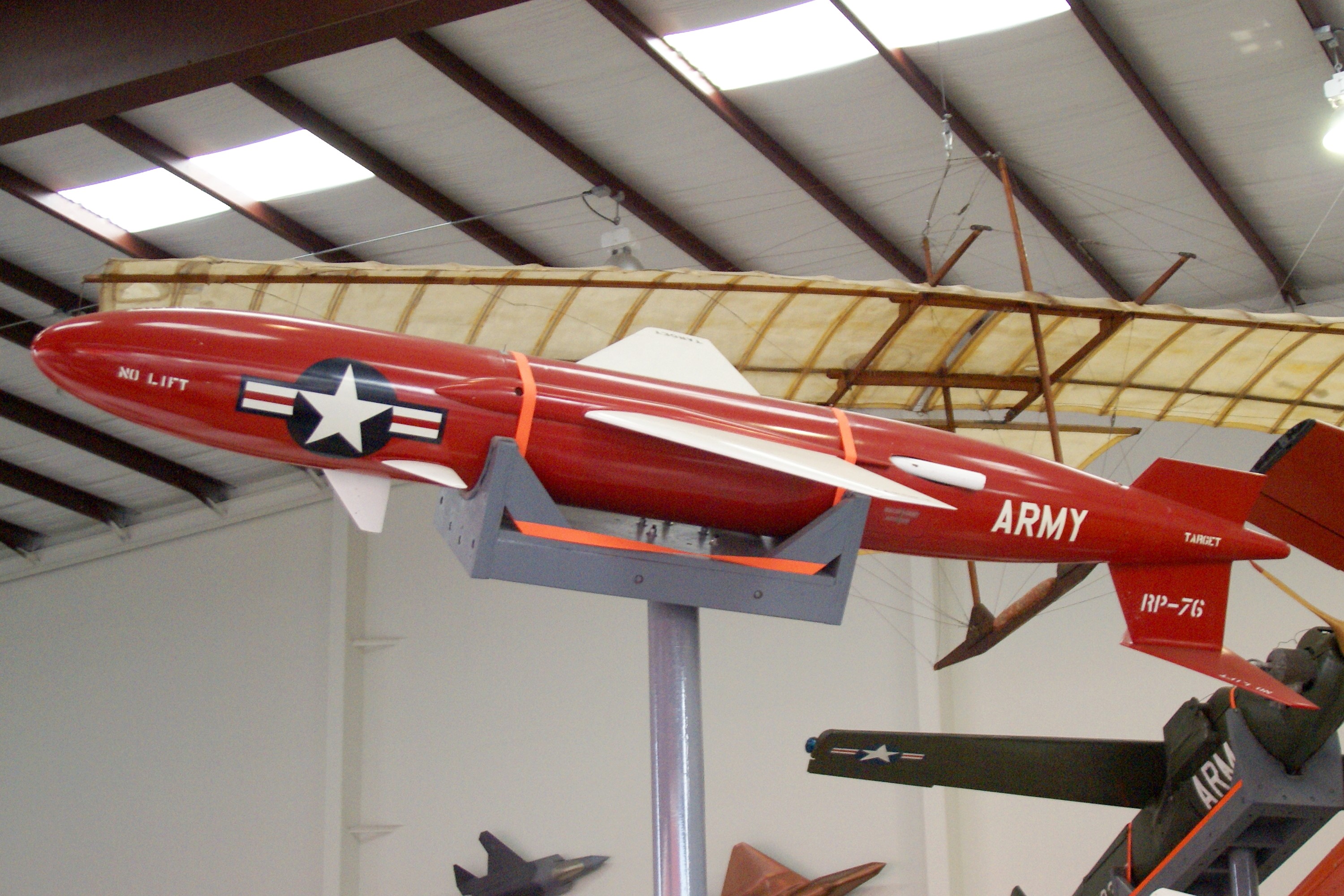
AQM-60
In the late 1940s, the US Air Force developed the X-7, which first attempted flight in 1951. The first flight failed, but subsequent flights were successful. The X-7 (later X-7A-1 and X-7A-3) was used for propulsion tests in the 1950s. It was a diamond wing, ramjet powered target, launched from either a B-29 or B-60 carrier. It used a rocket booster to get to speeds where the ramjet would operate. The recovery system was rater unique. It used a multi-stage parachute to slow down, and point it into a nose down attitude. The aircraft would impact the ground nose first, and stick that way. It was transfered to the Army, and redesignated the AQM-60, before being cancelled after 61 were built.
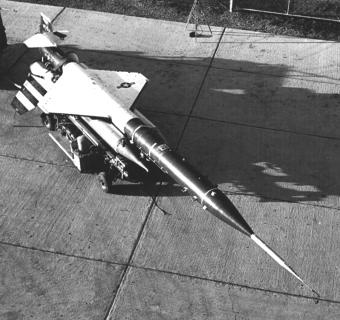
Q-4/AQM-35
In 1954, the Air Force issued a requirement for a supersonic target, with both air and ground launch capability. Initially dubbed the Q-4A/B, the AQM-35A/B was born. It was launched from either a B-50 or GC-130A, with a radio guidance system. It used a parachute and air bags for recovery, with a top speed of Mach 1.55 for the A, and Mach 2 for the B. The initial requirement was for a missile target, but the AQM-35 could also be fitted with cameras (both still and video).
In 1961, the AQM-35B flew. It replaced the original XJ81 turbojet with the more powerful J85 engine. The aircraft never became fully operational and was cancelled after 25 were built.
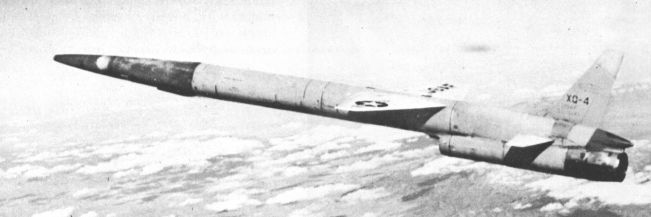
MQM-42
In 1961, the MQM-42 Redhead/Roadrunner flew. Its primary mission was as a target for the MIM-23 HAWK Surface to Air Missile system. It was powered by a solid fuel rocket, until the ramjet could be powered up. It was capable of high subsonic speeds, up to Mach 2. The Redhead was a high altitude version, capable of flying up to 60,000 feet, while the Roadrunner was used at low altitudes (as low as 300 feet). Recovery consisted of a retro rocket and parachute system.
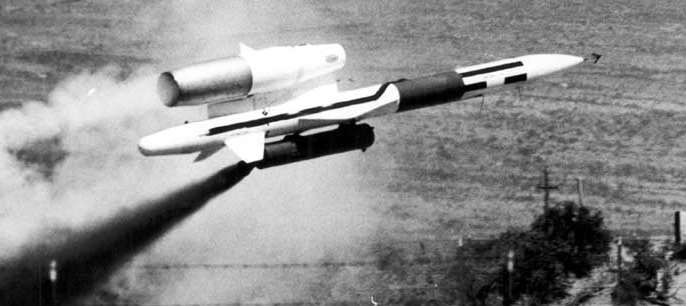
AQM-34 Firebee
This brings us to arguably the most successful of the UAVs built to date. The AQM-34 Firebee was the first "stealthy" UAV built. A screen was placed on the intake, and other stealth features were added to reduce the radar signature. The Firebee was launched from a DC-130 aircraft (which could carry up to four), which would then control the flight. It would deploy a parachute, allowing a helicopter to recover it at the end of the mission.
Initially designed for reconnaissance, the Firebee eventually became a target drone, being highly successful in both roles. During Vietnam, 1,000 Firebees flew 34,000 missions, with 83% returning able to fly again. The Firebee is still used by the US as a target drone for live fire training.
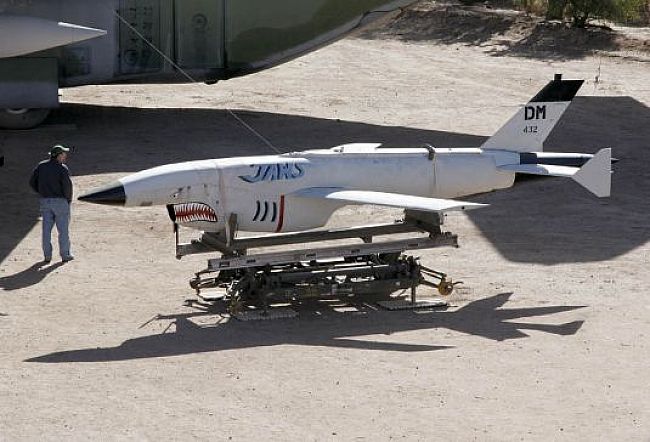
D-21
In 1965, Lockheed Martin flew the D-21. Designed to be stealthy and fast, it was capable of Mach 4 flight. It was originally supposed to be launched from the back of an A-12, redesignated the M-21 (the M-21 was a two seat version of the A-12). During one of the launches from the M-21 the D-21 crashed back into the carrier aircraft, causing it to break apart in flight. The crew was able to get out, but the launch control officer (Ray Torick) drowned after apparently opening his helmet too soon, after landing in the ocean.
After that all D-21 launches were to be performed by a B-52 carrier aircraft, and a rocket booster was added to accelerate the aircraft. After a troubled test phase, the D-21 went operational. Four missions were attempted over China, with all four being failures. The first aircraft failed to turn, and continued over the Soviet Union, where it eventually crashed. The second turned, but had a partial failure of the hatch (it was supposed to jettison the hatch, allowing the camera and film to be recovered). The third jettisoned the hatch, but the airborne recovery failed, and the destroyer that was going to recover it from the water hit it, causing it to sink. The final flight crashed inside China.
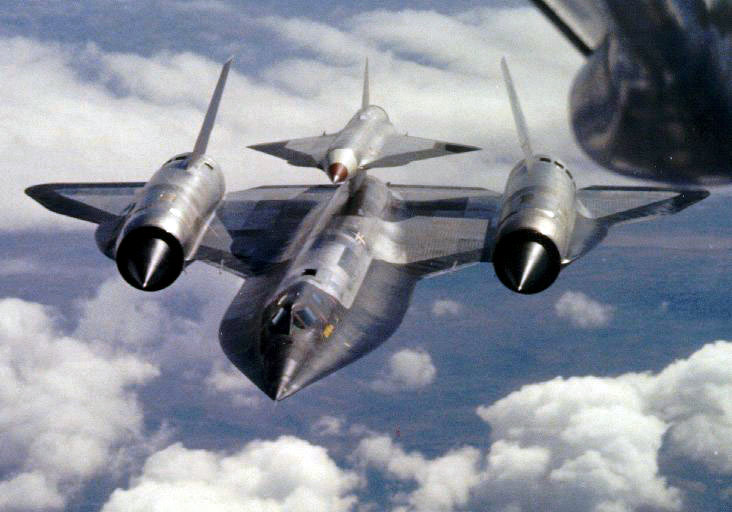
Firebee 1241
In 1970, the Israeli government secretly purchased 12 AQM-34 Firebee UAVs, renaming them the Firebee 1241. They used them in the Yom Kippur war, both for reconnaissance, and as decoys.
SPA 147
In the 1970s, the US military developed a UAV capable of listening in on communications of other countries. Designated the SPA (Special Purpose Aircraft) 147, it was built by Ryan Aeronautical, and based on the popular and successful Firebee. It had the ability to monitor radio communications, as well as take pictures from 60,000 feet, with an 8 hour flight time with a 300 pound camera mounted.

IAI Scout
In 1979 at the Paris Airshow, IAI (Israeli Aircraft Industries) unveiled the Scout. It was a small piston engine design made out of fiberglass. This gave it stealthy characteristics, making it more survivable in hostile airspace. It also had the ability to send real time data, via TV camera, as well as infrared systems, with an endurance of over 7 hours.
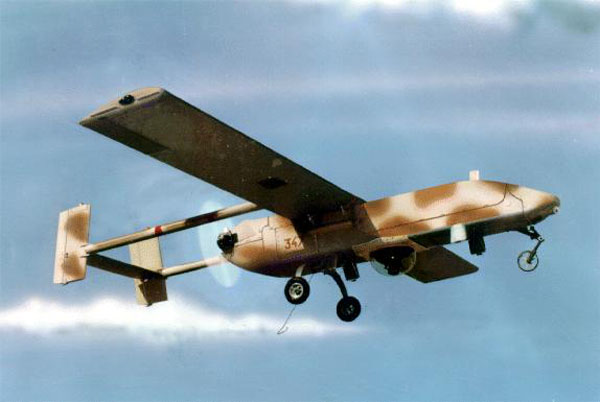
Pioneer
In 1984 the Pioneer was unveiled. The Pioneer was the first UAV made out of composite materials. The use of these materials allowed the Pioneer to carry a working payload. The Pioneer uses a two stroke engine and has a loiter time of over 5 hours, and can be flown autonomously on autopilot, on a preprogrammed routing, or manually from a ground control station. The aircraft only requires two people to assemble and launch it, which can occur from either a catapult system or rocket booster. Recovery consisted of flying the aircraft into a net.
The US received their aircraft in 1986, and flew several hundred missions in Desert Storm with them in 1991. On at least one mission, several Iraqi Army soldiers surrendered to the aircraft.
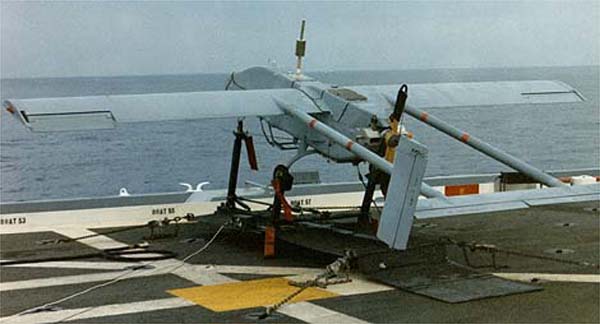
Ababil
The Ababil was develop by Iran around 1995. It was launched from the back of a truck, and recovered on skids. Little is known about it, but it has been used by Iran and Hezbollah.
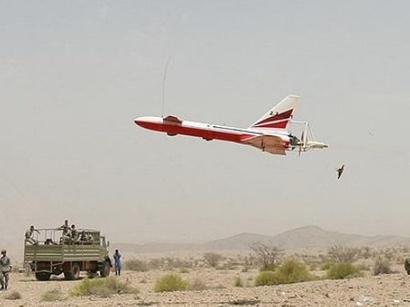
Firebird 2001
The Firebird 2001 was developed as a civilian use UAV, to monitor wildfires. Tests were conducted in Montana with the USDA. The Firebird had a loiter time of 6 hours, and a ceiling of 15,000 feet.
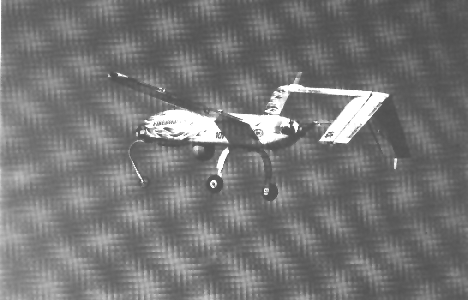
Pathfinder/Pathfinder Plus/Centurion/Helios
The Pathfinder is a solar powered research aircraft that first flew in 1997. It was designed to be able to fly at high altitudes, gathering wind data, while using the sun to power the engines. It had backup batteries for limited night flying. It reached an altitude of over 67,000 feet. The Helios aircraft crashed near the island of Kauai in 2003, after breaking apart in flight.
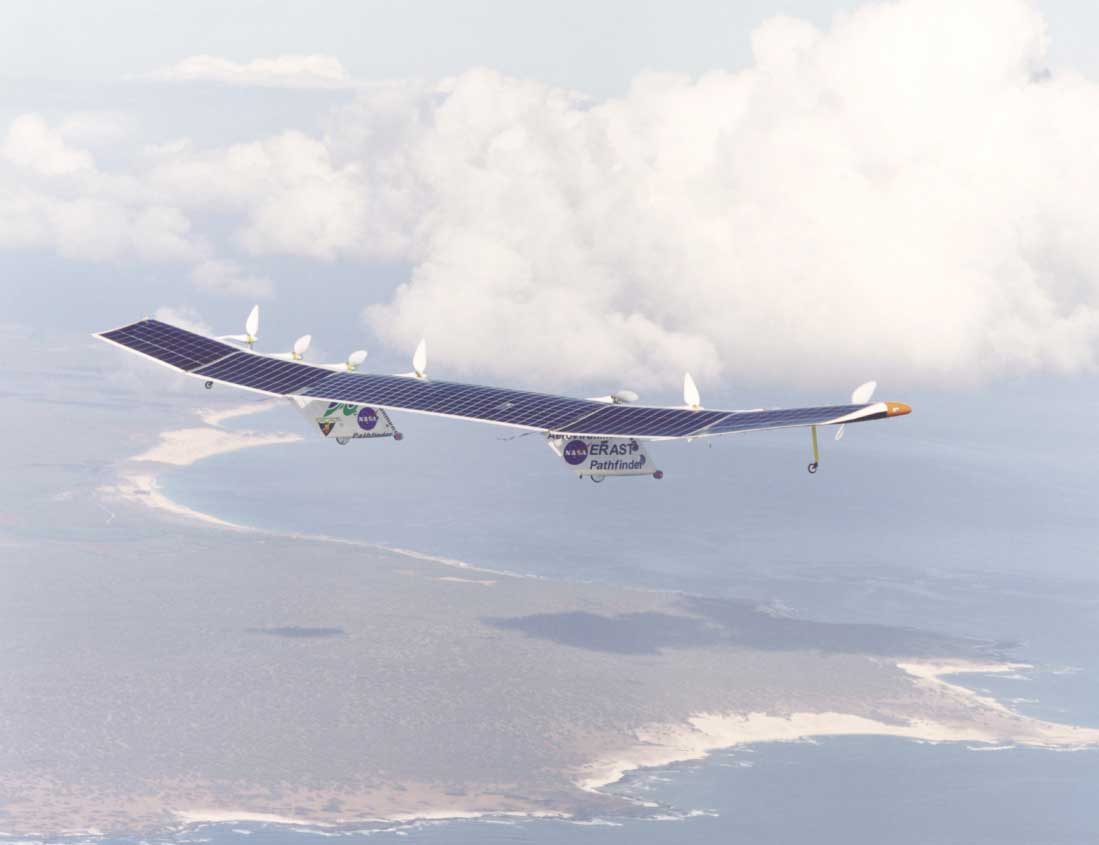
In 1959, the AQM-38 entered service. Initially known as the RP-76 for the Army, and the RP-70/XKD4R-1 for the Navy, the AQM-38 was a rocket powered target drone for training missile crews on. The AQM-38A, for the Army was subsonic, and powered by an Aerojet solid fuel motor. The AQM-38B, for the Navy, was powered by a larger solid fuel rocket and was capable of a top speed of Mach 1.25. Both were air launched, and parachute recovered, and featured radar enhancements to show larger targets.

AQM-60
In the late 1940s, the US Air Force developed the X-7, which first attempted flight in 1951. The first flight failed, but subsequent flights were successful. The X-7 (later X-7A-1 and X-7A-3) was used for propulsion tests in the 1950s. It was a diamond wing, ramjet powered target, launched from either a B-29 or B-60 carrier. It used a rocket booster to get to speeds where the ramjet would operate. The recovery system was rater unique. It used a multi-stage parachute to slow down, and point it into a nose down attitude. The aircraft would impact the ground nose first, and stick that way. It was transfered to the Army, and redesignated the AQM-60, before being cancelled after 61 were built.

Q-4/AQM-35
In 1954, the Air Force issued a requirement for a supersonic target, with both air and ground launch capability. Initially dubbed the Q-4A/B, the AQM-35A/B was born. It was launched from either a B-50 or GC-130A, with a radio guidance system. It used a parachute and air bags for recovery, with a top speed of Mach 1.55 for the A, and Mach 2 for the B. The initial requirement was for a missile target, but the AQM-35 could also be fitted with cameras (both still and video).
In 1961, the AQM-35B flew. It replaced the original XJ81 turbojet with the more powerful J85 engine. The aircraft never became fully operational and was cancelled after 25 were built.

MQM-42
In 1961, the MQM-42 Redhead/Roadrunner flew. Its primary mission was as a target for the MIM-23 HAWK Surface to Air Missile system. It was powered by a solid fuel rocket, until the ramjet could be powered up. It was capable of high subsonic speeds, up to Mach 2. The Redhead was a high altitude version, capable of flying up to 60,000 feet, while the Roadrunner was used at low altitudes (as low as 300 feet). Recovery consisted of a retro rocket and parachute system.

AQM-34 Firebee
This brings us to arguably the most successful of the UAVs built to date. The AQM-34 Firebee was the first "stealthy" UAV built. A screen was placed on the intake, and other stealth features were added to reduce the radar signature. The Firebee was launched from a DC-130 aircraft (which could carry up to four), which would then control the flight. It would deploy a parachute, allowing a helicopter to recover it at the end of the mission.
Initially designed for reconnaissance, the Firebee eventually became a target drone, being highly successful in both roles. During Vietnam, 1,000 Firebees flew 34,000 missions, with 83% returning able to fly again. The Firebee is still used by the US as a target drone for live fire training.

D-21
In 1965, Lockheed Martin flew the D-21. Designed to be stealthy and fast, it was capable of Mach 4 flight. It was originally supposed to be launched from the back of an A-12, redesignated the M-21 (the M-21 was a two seat version of the A-12). During one of the launches from the M-21 the D-21 crashed back into the carrier aircraft, causing it to break apart in flight. The crew was able to get out, but the launch control officer (Ray Torick) drowned after apparently opening his helmet too soon, after landing in the ocean.
After that all D-21 launches were to be performed by a B-52 carrier aircraft, and a rocket booster was added to accelerate the aircraft. After a troubled test phase, the D-21 went operational. Four missions were attempted over China, with all four being failures. The first aircraft failed to turn, and continued over the Soviet Union, where it eventually crashed. The second turned, but had a partial failure of the hatch (it was supposed to jettison the hatch, allowing the camera and film to be recovered). The third jettisoned the hatch, but the airborne recovery failed, and the destroyer that was going to recover it from the water hit it, causing it to sink. The final flight crashed inside China.

Firebee 1241
In 1970, the Israeli government secretly purchased 12 AQM-34 Firebee UAVs, renaming them the Firebee 1241. They used them in the Yom Kippur war, both for reconnaissance, and as decoys.
SPA 147
In the 1970s, the US military developed a UAV capable of listening in on communications of other countries. Designated the SPA (Special Purpose Aircraft) 147, it was built by Ryan Aeronautical, and based on the popular and successful Firebee. It had the ability to monitor radio communications, as well as take pictures from 60,000 feet, with an 8 hour flight time with a 300 pound camera mounted.

IAI Scout
In 1979 at the Paris Airshow, IAI (Israeli Aircraft Industries) unveiled the Scout. It was a small piston engine design made out of fiberglass. This gave it stealthy characteristics, making it more survivable in hostile airspace. It also had the ability to send real time data, via TV camera, as well as infrared systems, with an endurance of over 7 hours.

Pioneer
In 1984 the Pioneer was unveiled. The Pioneer was the first UAV made out of composite materials. The use of these materials allowed the Pioneer to carry a working payload. The Pioneer uses a two stroke engine and has a loiter time of over 5 hours, and can be flown autonomously on autopilot, on a preprogrammed routing, or manually from a ground control station. The aircraft only requires two people to assemble and launch it, which can occur from either a catapult system or rocket booster. Recovery consisted of flying the aircraft into a net.
The US received their aircraft in 1986, and flew several hundred missions in Desert Storm with them in 1991. On at least one mission, several Iraqi Army soldiers surrendered to the aircraft.

Ababil
The Ababil was develop by Iran around 1995. It was launched from the back of a truck, and recovered on skids. Little is known about it, but it has been used by Iran and Hezbollah.

Firebird 2001
The Firebird 2001 was developed as a civilian use UAV, to monitor wildfires. Tests were conducted in Montana with the USDA. The Firebird had a loiter time of 6 hours, and a ceiling of 15,000 feet.

Pathfinder/Pathfinder Plus/Centurion/Helios
The Pathfinder is a solar powered research aircraft that first flew in 1997. It was designed to be able to fly at high altitudes, gathering wind data, while using the sun to power the engines. It had backup batteries for limited night flying. It reached an altitude of over 67,000 feet. The Helios aircraft crashed near the island of Kauai in 2003, after breaking apart in flight.

edit on 11/6/
edit on 11/6/2013 by Zaphod58 because: (no reason given)
extra DIV RQ/MQ-1/9
In 1996 the US introduced the RQ-1 Predator series of UAV. The RQ-1 required a team of three to operate, and was unarmed. It had a loiter time of up to 16 hours, carrying various sensors. In 2001 the military began fitting the RQ-1 with Hellfire missiles and was redesignated the MQ-1.
In 2007, the Predator B was developed, and designated the MQ-9 Reaper. The tail section was changed to a vertical tail arrangement, as opposed to the downward facing fins on the RQ/MQ-1. The overall size was also increased, allowing a much larger weapons load than the MQ-1.
There is also a jet powered version in development called the Avenger, that has flown missions over Afghanistan for testing.
RQ/MQ-1:
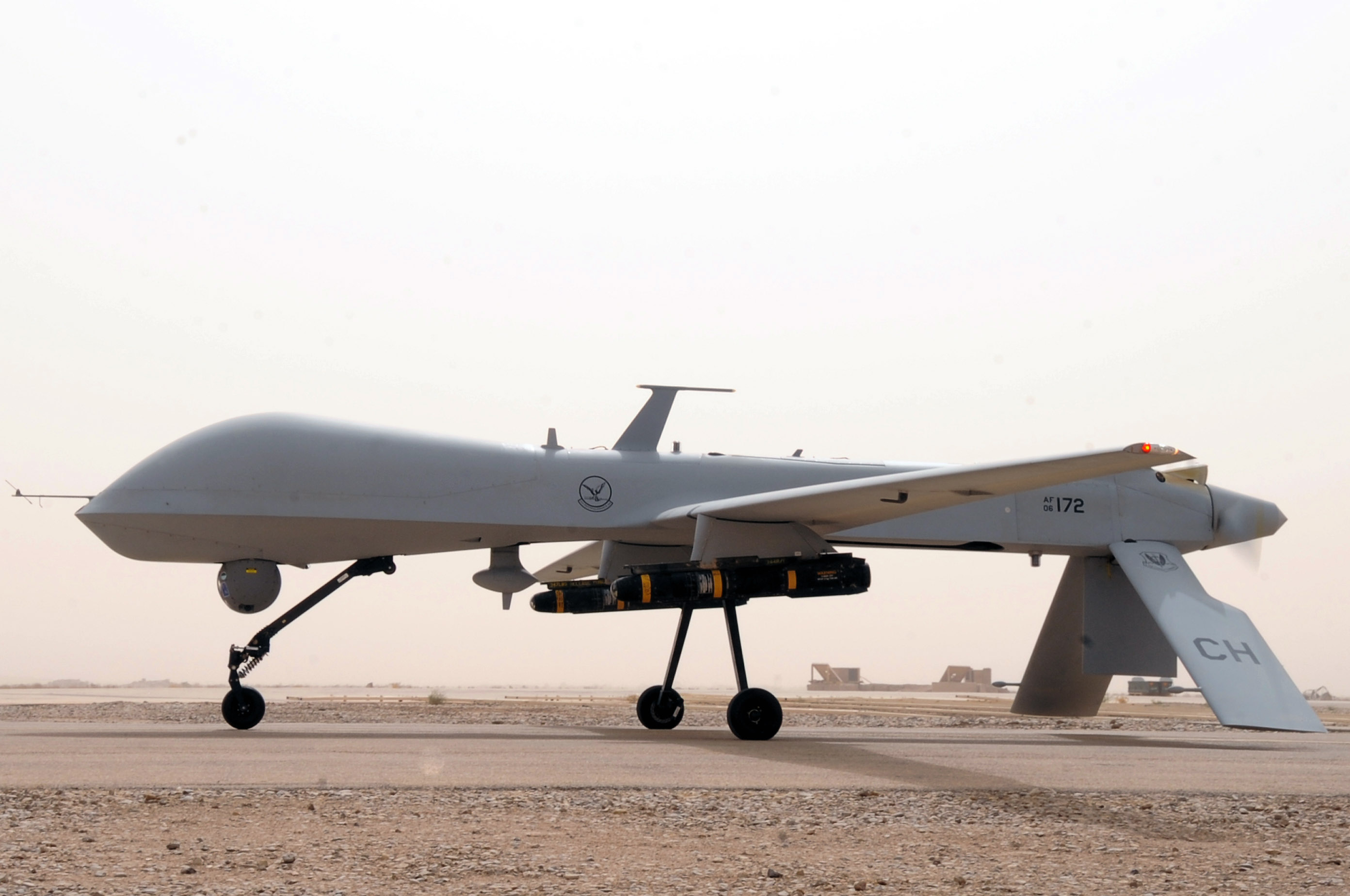
MQ-9:
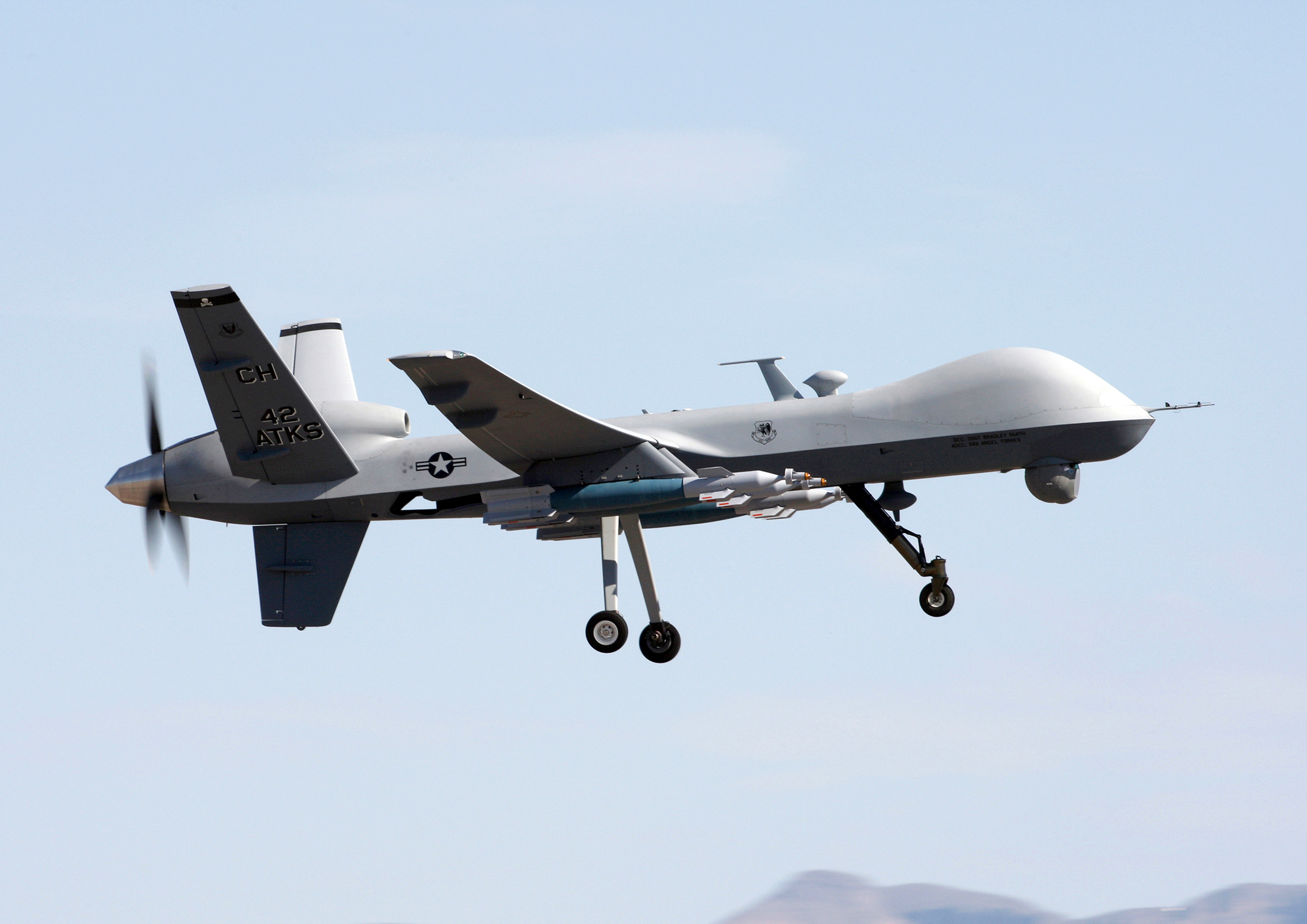
Luna X-2000
The Luna X-2000 is in use by the German military as a short range, all weather reconnaissance asset. It uses a 2 cycle 2 stroke engine, and is fully autonomous. It also has a modular payload so the mission can be quickly changed.
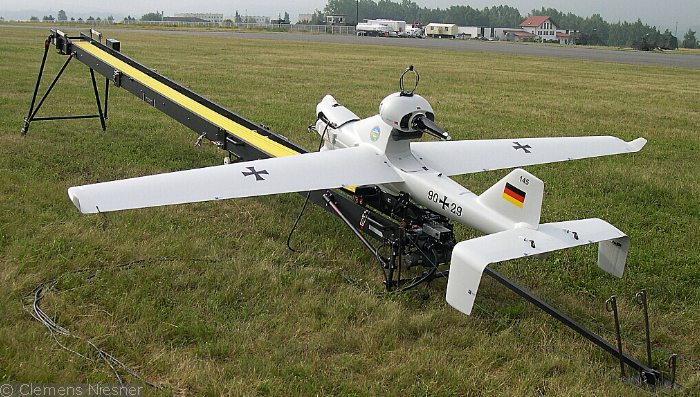
RQ-14 Dragon Eye
The RQ-14 Dragon Eye is designed to be fully autonomous and can be carried in a backpack. It's a catapult or hand launched system, with multiple sensors on board. One Dragon Eye "package" consists of three UAVs, and a ground station. All of which can be easily carried in a backpack.

RQ-4 Global Hawk
The RQ/EQ/MQ-4 Global Hawk is a very large UAV, capable of high altitude flight, and loiter times of over 24 hours. It was originally intended to replace the U-2 Dragon Lady, and performs a similar mission. The wingspan of the Global Hawk is similar in size to that of a Boeing 737. It became the first UAV to cross the Pacific Ocean when it flew from the US to Australia on a demonstration flight.
The Navy is developing the Triton version of the Global Hawk, to use for maritime surveillance. Due to long loiter times, and high altitudes, the Triton will be able to easily scan millions of square miles each flight.

RQ-11 Raven
The RQ-11 is similar to the Dragon Eye, in that it's a small hand launched UAV, designed for short range flights. It's easily carried in a back pack, and can be quickly assembled and launched.
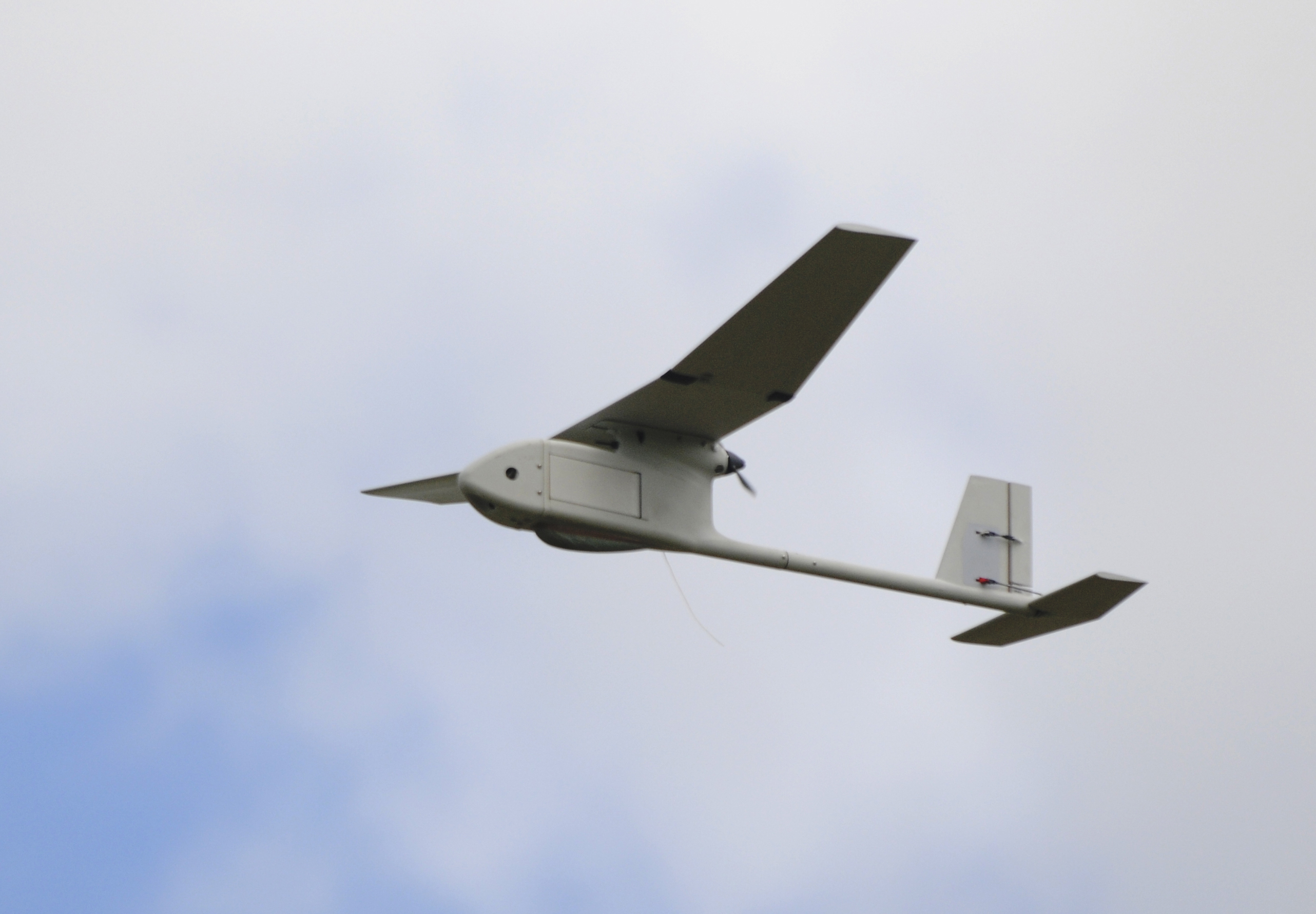
RQ-170 Sentinel
The RQ-170 Sentinel is a stealthy UAV designed to survive in contested airspace. It's a flying wing design similar to the B-2 Spirit stealth bomber. It was rumored to exist in the early 2000s, after a series of reports came out of Afghanistan of an unknown UAV flying from Kandahar. Finally pictures were released showing the aircraft on the taxiway. The USAF finally admitted the existence of the new aircraft, originally dubbed "The Beast of Kandahar". There were approximately 20 of them delivered, with Iran spoofing one into crashing in the desert, where they were able to recover it. China has since unveiled a similar design, after they were allowed to examine the wreckage in Iran.
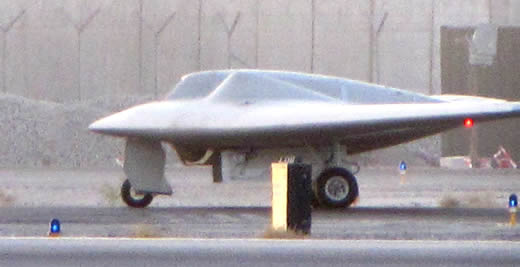
Galileo Falco
The Galileo Falco was produced in Italy, and sold to Pakistan as the only customer. It's a pusher design, where the propellor is in the back, between twin tail booms. The payload will depend on the mission, and it's a quiet and hard to detect design.
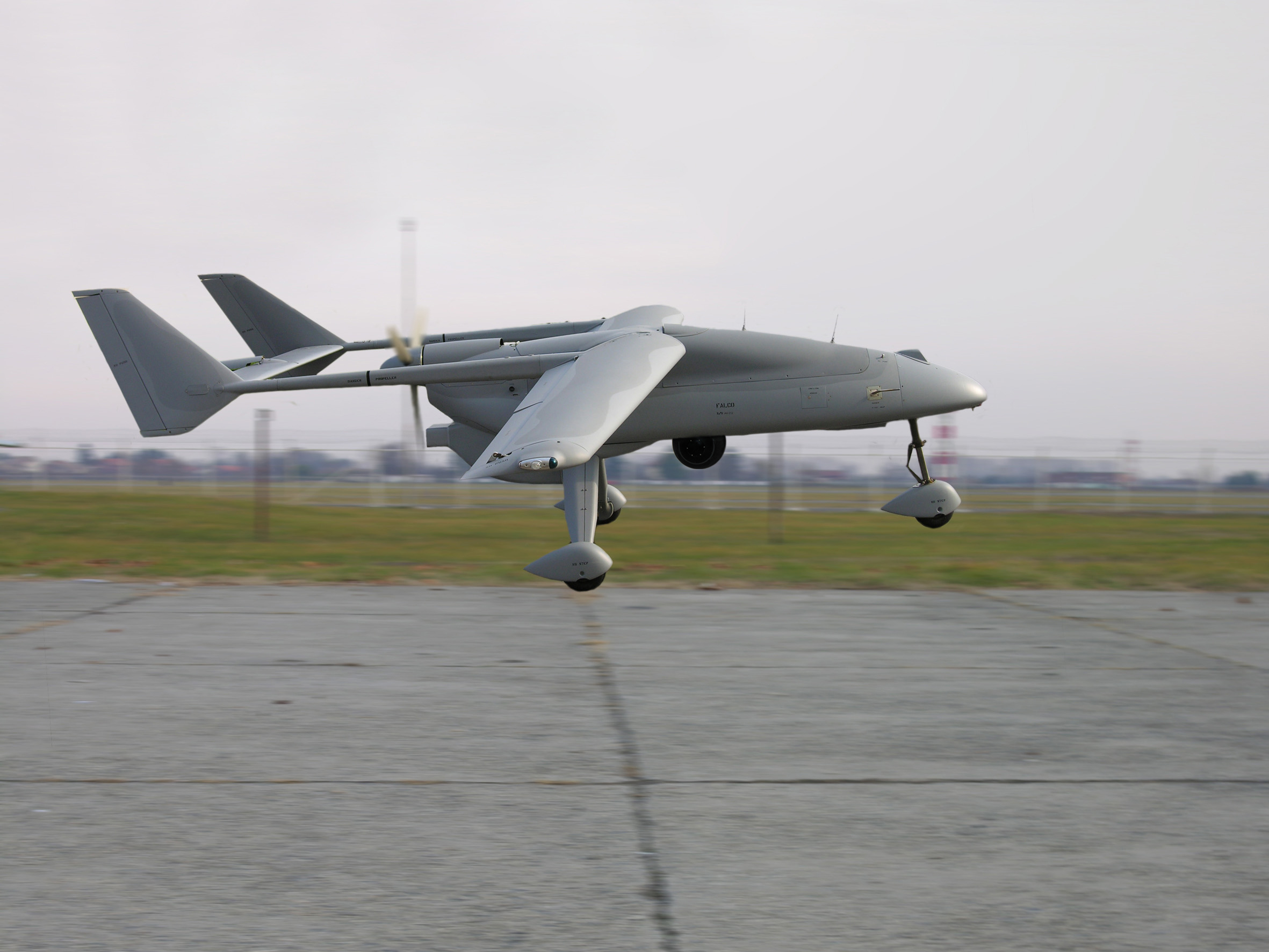
Which brings me to where I will end the opening of this thread. I'm sure many others will be brought up, and I deliberately left some off (as I said this is far from definitive as the UAV world changes daily some days). I tried to go with ones that are actually operational instead of everything, or even including ones that were tested or are in testing.
In 1996 the US introduced the RQ-1 Predator series of UAV. The RQ-1 required a team of three to operate, and was unarmed. It had a loiter time of up to 16 hours, carrying various sensors. In 2001 the military began fitting the RQ-1 with Hellfire missiles and was redesignated the MQ-1.
In 2007, the Predator B was developed, and designated the MQ-9 Reaper. The tail section was changed to a vertical tail arrangement, as opposed to the downward facing fins on the RQ/MQ-1. The overall size was also increased, allowing a much larger weapons load than the MQ-1.
There is also a jet powered version in development called the Avenger, that has flown missions over Afghanistan for testing.
RQ/MQ-1:

MQ-9:

Luna X-2000
The Luna X-2000 is in use by the German military as a short range, all weather reconnaissance asset. It uses a 2 cycle 2 stroke engine, and is fully autonomous. It also has a modular payload so the mission can be quickly changed.

RQ-14 Dragon Eye
The RQ-14 Dragon Eye is designed to be fully autonomous and can be carried in a backpack. It's a catapult or hand launched system, with multiple sensors on board. One Dragon Eye "package" consists of three UAVs, and a ground station. All of which can be easily carried in a backpack.

RQ-4 Global Hawk
The RQ/EQ/MQ-4 Global Hawk is a very large UAV, capable of high altitude flight, and loiter times of over 24 hours. It was originally intended to replace the U-2 Dragon Lady, and performs a similar mission. The wingspan of the Global Hawk is similar in size to that of a Boeing 737. It became the first UAV to cross the Pacific Ocean when it flew from the US to Australia on a demonstration flight.
The Navy is developing the Triton version of the Global Hawk, to use for maritime surveillance. Due to long loiter times, and high altitudes, the Triton will be able to easily scan millions of square miles each flight.

RQ-11 Raven
The RQ-11 is similar to the Dragon Eye, in that it's a small hand launched UAV, designed for short range flights. It's easily carried in a back pack, and can be quickly assembled and launched.

RQ-170 Sentinel
The RQ-170 Sentinel is a stealthy UAV designed to survive in contested airspace. It's a flying wing design similar to the B-2 Spirit stealth bomber. It was rumored to exist in the early 2000s, after a series of reports came out of Afghanistan of an unknown UAV flying from Kandahar. Finally pictures were released showing the aircraft on the taxiway. The USAF finally admitted the existence of the new aircraft, originally dubbed "The Beast of Kandahar". There were approximately 20 of them delivered, with Iran spoofing one into crashing in the desert, where they were able to recover it. China has since unveiled a similar design, after they were allowed to examine the wreckage in Iran.

Galileo Falco
The Galileo Falco was produced in Italy, and sold to Pakistan as the only customer. It's a pusher design, where the propellor is in the back, between twin tail booms. The payload will depend on the mission, and it's a quiet and hard to detect design.

Which brings me to where I will end the opening of this thread. I'm sure many others will be brought up, and I deliberately left some off (as I said this is far from definitive as the UAV world changes daily some days). I tried to go with ones that are actually operational instead of everything, or even including ones that were tested or are in testing.
Outstanding thread!
Being an old aviation and war history buff there were a shocking number of drone craft I'd never heard of. Your thread certainly fills in those gaps for me.
I intensely object to allowing military and police overflights using these things in the US for mass surveillance and whatever else they may have in mind. It's because I know of so many ways these things can be used it's pretty scary viewed in totality. Then there's the tiny drones. Dystopian nightmare.
As toys these things are awesome.
I would love to have a nice RC plane with a camera to fool around with.
A lot of effort went in to researching and creating this thread.
Job well done
SNF
Being an old aviation and war history buff there were a shocking number of drone craft I'd never heard of. Your thread certainly fills in those gaps for me.
I intensely object to allowing military and police overflights using these things in the US for mass surveillance and whatever else they may have in mind. It's because I know of so many ways these things can be used it's pretty scary viewed in totality. Then there's the tiny drones. Dystopian nightmare.
As toys these things are awesome.
I would love to have a nice RC plane with a camera to fool around with.
A lot of effort went in to researching and creating this thread.
Job well done
SNF
edit on 6-11-2013 by Asktheanimals because: added comment
reply to post by Asktheanimals
I was surprised at some of them too. I knew about the remote controlled B-17 and B-24 in WWII, but those were the earliest that I could remember ever hearing about. Learning that the first use of them was as far back as 1849 shocked me. It was a lot of work, but it was really interesting to do at the same time. I learned a lot doing it.
I was surprised at some of them too. I knew about the remote controlled B-17 and B-24 in WWII, but those were the earliest that I could remember ever hearing about. Learning that the first use of them was as far back as 1849 shocked me. It was a lot of work, but it was really interesting to do at the same time. I learned a lot doing it.
Fantastic thread, Zaph!! Huge flag and a star for you, sir!
You left out a few at the end, though heh
You left out a few at the end, though heh
reply to post by weavty1
Well like I said, this wasn't supposed to be the definitive UAV thread, just a general history. There's no reason they can't be added in as the thread moves along though.
Well like I said, this wasn't supposed to be the definitive UAV thread, just a general history. There's no reason they can't be added in as the thread moves along though.
reply to post by Zaphod58
Very nice job with the research project, Z! Definitely learned some new stuff
Very nice job with the research project, Z! Definitely learned some new stuff
reply to post by Zaphod58
I know man, just trying to squeeze any secret stuff outta ya, is all lol
Honestly though, awesome thread!!! Read it twice now.. Love it
I know man, just trying to squeeze any secret stuff outta ya, is all lol
Honestly though, awesome thread!!! Read it twice now.. Love it
reply to post by weavty1
Keep trying. Hah.
I'm thinking about in a day or two, after I've had time to recover from writing all this, I'll add in the Chinese UAVs, including the new one they just unveiled.
Keep trying. Hah.
I'm thinking about in a day or two, after I've had time to recover from writing all this, I'll add in the Chinese UAVs, including the new one they just unveiled.
Hi Zaph. Good read mate. Have or will you include the "Jindivik" pilotless target aircraft developed in Aussie.?
reply to post by bally001
I haven't yet, but after I catch up on a few other things I'm probably going to be adding more, and probably get into the future concepts, as well as some of the one offs and testbeds.
I haven't yet, but after I catch up on a few other things I'm probably going to be adding more, and probably get into the future concepts, as well as some of the one offs and testbeds.
You've out done yourself this time Zaph fantastic read even if I only skim read it while having breakfast
My bet with you about trying to find something you don't know is beginning to look impossible
Keep it up mate!
My bet with you about trying to find something you don't know is beginning to look impossible
Keep it up mate!
reply to post by Zaphod58
Another is the "Ikara" . Launched from warships delivering a Mk44 torpedo. Anti submarine stuff. Thanks again.
Another is the "Ikara" . Launched from warships delivering a Mk44 torpedo. Anti submarine stuff. Thanks again.
reply to post by bally001
I have a bunch of reading to catch up on, as well as another thread going on that I need to pay attention to for a day or two and get it going more than it has been. I'll probably sit down Friday or Saturday and add more in, and will make sure to include those as well.
I have a bunch of reading to catch up on, as well as another thread going on that I need to pay attention to for a day or two and get it going more than it has been. I'll probably sit down Friday or Saturday and add more in, and will make sure to include those as well.
Iirc Ryan made several different variants of their drones? Curtis Peebles "Dark Skies" book mentions them spanning from around 1959->the 70's?
Epic thread Zaph. I have nothing constructive to add but wanted to say THANKS for the education
reply to post by solidshot
The Firebee has been around in several different versions, from recon to targets, to decoys, and are still used today around the world.
The Firebee has been around in several different versions, from recon to targets, to decoys, and are still used today around the world.
new topics
-
Thousands Of Young Ukrainian Men Trying To Flee The Country To Avoid Conscription And The War
Other Current Events: 2 hours ago -
12 jurors selected in Trump criminal trial
US Political Madness: 5 hours ago -
Iran launches Retalliation Strike 4.18.24
World War Three: 5 hours ago -
Israeli Missile Strikes in Iran, Explosions in Syria + Iraq
World War Three: 6 hours ago -
George Knapp AMA on DI
Area 51 and other Facilities: 11 hours ago -
Not Aliens but a Nazi Occult Inspired and then Science Rendered Design.
Aliens and UFOs: 11 hours ago
top topics
-
George Knapp AMA on DI
Area 51 and other Facilities: 11 hours ago, 25 flags -
Israeli Missile Strikes in Iran, Explosions in Syria + Iraq
World War Three: 6 hours ago, 14 flags -
Louisiana Lawmakers Seek to Limit Public Access to Government Records
Political Issues: 14 hours ago, 7 flags -
So I saw about 30 UFOs in formation last night.
Aliens and UFOs: 17 hours ago, 6 flags -
Iran launches Retalliation Strike 4.18.24
World War Three: 5 hours ago, 6 flags -
Not Aliens but a Nazi Occult Inspired and then Science Rendered Design.
Aliens and UFOs: 11 hours ago, 5 flags -
12 jurors selected in Trump criminal trial
US Political Madness: 5 hours ago, 4 flags -
The Tories may be wiped out after the Election - Serves them Right
Regional Politics: 15 hours ago, 3 flags -
Thousands Of Young Ukrainian Men Trying To Flee The Country To Avoid Conscription And The War
Other Current Events: 2 hours ago, 3 flags
active topics
-
Thousands Of Young Ukrainian Men Trying To Flee The Country To Avoid Conscription And The War
Other Current Events • 1 • : stosh64 -
Mandela Effect - It Happened to Me!
The Gray Area • 108 • : ArMaP -
Mood Music Part VI
Music • 3058 • : Hellmutt -
Fossils in Greece Suggest Human Ancestors Evolved in Europe, Not Africa
Origins and Creationism • 60 • : whereislogic -
Scarface does Tiny Desk Concert
Music • 7 • : sitrose -
The Acronym Game .. Pt.3
General Chit Chat • 7727 • : F2d5thCavv2 -
Russia Ukraine Update Thread - part 3
World War Three • 5697 • : F2d5thCavv2 -
Do we live in a simulation similar to The Matrix 1999?
ATS Skunk Works • 22 • : SchrodingersRat -
Iran launches Retalliation Strike 4.18.24
World War Three • 15 • : semperfortis -
President BIDEN Warned IRAN Not to Attack ISRAEL - Iran Responded with a Military Attack on Israel.
World War Three • 43 • : WeMustCare
